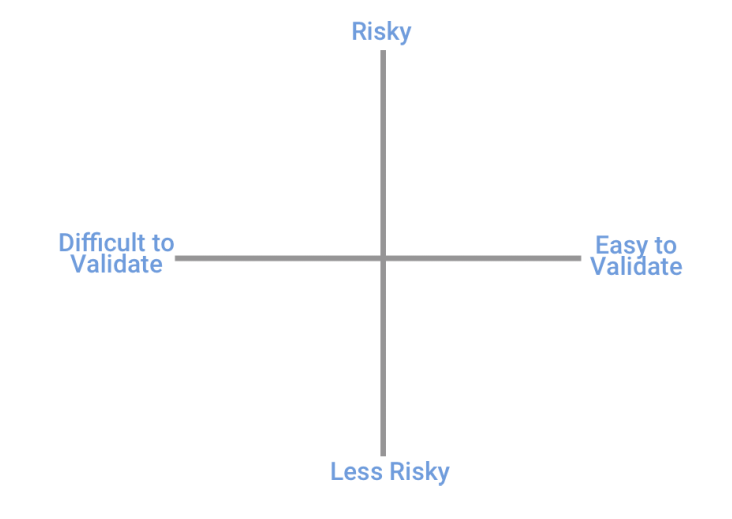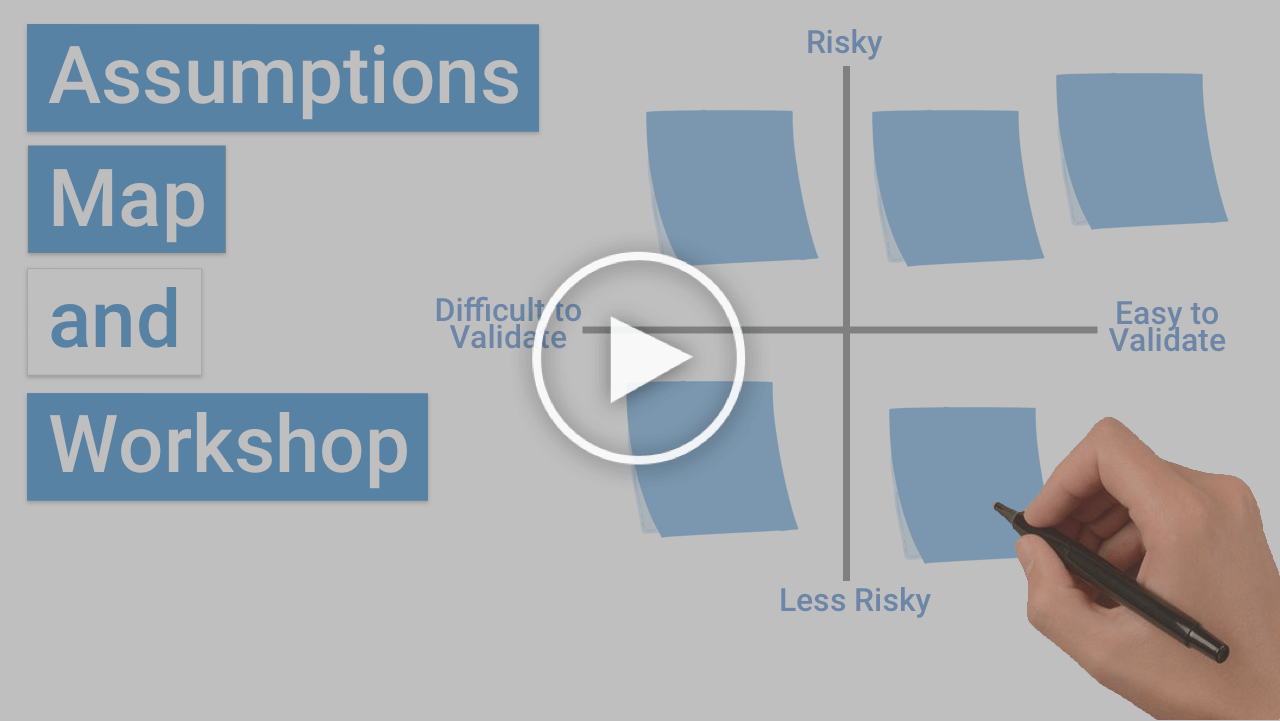Validate Your Assumptions With An Assumptions Map

Assumptions are things we believe to be true, with little to no proof of them being true. Before spending time and money to create a minimum viable product, the product team should organize and validate these assumptions before diving into development. This is recommended for all companies – from tiny startups to large enterprises, to mitigate risk of releasing a product that doesn’t have a market fit.
It’s easy to think “I would use this, so other people would use this too”. Holding an assumptions workshop is the first step towards testing if these hypotheses about your product are true.
Your assumptions map will guide the questions what questions you ask participants during qualitative research sessions. This way, you’ll be able to validate your assumptions.

From the assumptions workshop, you’ll create an assumptions map, and from the assumptions map, you’ll create qualitative research questions.
Before the Assumptions Map Workshop
Before the session, identify the key stakeholders that would be valuable to map out assumptions with. You’ll be gathering stakeholders for 60-90 minutes. The group will brainstorm different assumptions.
Also, prepare materials, including a whiteboard, stickies, and markers.
During the Assumptions Map Workshop
Distribute sticky notes and markers to the group. Tell stakeholders to write down all of the assumptions they can think of on the sticky notes. It doesn’t have to be perfect, so limit the sticky note brainstorming time to 10-15 minutes.
Each person should head up to the board, place their sticky notes on the board and explain their rationale for each assumption. Following that, the facilitator should lead the discussion in organizing the stickies into different quadrants.
Filling out the Assumptions Map
The vertical axis outlines the riskiness. Ask yourself the question: “if this assumption is incorrect, will it be detrimental to the viability and success of my product?” If so, place those assumptions on top, which captures “risky” assumptions. Any assumptions that are not risky to your product’s success are placed at the bottom axis.
Across the horizontal axis, the left side is assumptions that are “difficult to validate”, these are assumptions that will be challenging to prove true. The right side of the horizontal axis is the “easy to validate” assumptions.
Subscribe to receive our monthly newsletter!
An Example Assumptions Map
Let’s say you’re building a meditation app and you want to test out your assumptions.
The first assumption is that “people want to meditate” & “people want to use their phones to meditate”, This is risky & easy to validate through qualitative and market research.
Another assumption is that “people have smartphones”. You can launch market research, making this a risky & easy to validate assumptions.
A risky and difficult to validate assumption is that people will pay money for your meditation app. Regardless of how many people you ask “would you be willing to buy this app”, when it comes down to actually buying the app they may not want to part with their own wallets.
An easy to validate & less risky assumption is that “people want video content extras”. This isn’t consequential to your core product, but it will determine if it’s worth creating a bunch of blogs and videos within your app. You can easily ask people if they read wellness content on a daily basis.
A “difficult to validate & less risky” assumption is that “people will track their daily stress levels. While your product can be successful without it, it would be a nice add on if there’s a market fit. Since there’s no way to know for sure that someone will actually actively track their stress, it’s more difficult to get a clear answer.
Remember, these categories are subjective and one assumption can be placed in multiple different quadrants.
After the Assumptions Map Workshop
Following the session, collect all the sticky notes and record all of the notes in a document.
Take the stickies from the “easy to validate & risky assumptions” quadrant and create discussion questions for your qualitative research sessions. This way, you’ll be able to test out your assumptions with participants to see if the product or product line is worth pursuing. Conduct moderated interviews and unmoderated sessions to validate those assumptions. In essence, assumption mapping is a method to get actionable takeaways so that teams can successfully move their ideas forward.
Speak to high quality people



